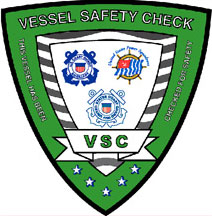Important Websites to Know About
Getting Started with Uniforms
The first uniform you will need is called the Tropical blue
uniform. This uniform will be worn at most meetings, as well as public
affairs
events when interacting with the public. You should plan on
purchasing a tropical blue uniform within a couple months of joining.
You will need
the following for the tropical blue uniform:
- * Belt - plain buckle
- * Cap - Garrison cap
- * Cap accessory - Garrison cap device
- * Collar device - Member collar insignia (also goes on the cap)
- * Name tag - Last name only
- * Shoulder board - Member, Regular Shoulder Boards
- ** Tropical blue short-sleeved shirt
- ** Long navy blue pants
- ** Shoes - black oxford low quarters
- V-neck white t-shirt (must be v-neck)
- Socks - black
Single-starred "*" items can be purchased from the Coast Guard Exchange.
Double-starred "**" items can be purchased from the following
Exchange
Curtis Bay CG Yard
2401 Hawkins Point Road
Building 33
Baltimore, MD 21226-1791
(410) 636-4198
Mon-Fri 0900-1630
Sat 0900-1500
Closed Sunday & Holidays
|
|
Exchange
Coast Guard Headquarters
2703 Martin Luther King Jr Ave SE, Unit 49
Washington, DC 20032
(202) 372-4780
Mon-Fri 0830-1530
Closed Saturday, Sunday & Holidays |
U.S. Coast Guard Uniform Distribution Center
414 Madison Avenue
Woodbine, NJ 08270-2315
http://www.uscg.mil/uniform/
(800) 874-6841
UDCSupport@comcast.net
|
|
 |
Other uniforms are used for operations (e.g. boat crew) and other special responsibilities. See your Flotilla Human Resources
Staff Officer (FSO-HR) for information about these uniforms. |
Basic Member Training
Complete within 1 year of joining:
Incident Command System (ICS)
These are required for all members:
Vessel Examiner
|
As a certified Vessel Examiner you will have the unique
opportunity to work with and educate the recreational boating public.
This one-on-one interaction will provide a vital opportunity to
enhance a boater’s knowledge, and help ensure they have a safe,
fun filled day on the water. You may start this qualification if
your membership is AP or IQ,
but you must have BQ status to complete this qualification.
|
 |
Boat Crew
 |
If your are looking to become more active with operations, then
Boat Crew is the best place to start. You may start this qualification
if your
membership is AP or IQ, but you must have BQ status to complete this
qualification.
|
Marine Safety & Environment Protection
|
The Auxiliary Trident Training program is designed to train
Auxiliarists to support Coast Guard Sectors. Training for most
qualifications is done
by active duty or reserve Coast Guard personnel, not by Auxiliarists.
Training opportunities and policies vary from Sector to Sector so
members
should check with their MS Staff chain of leadership to determine the
opportunities and policies in their Sector. You may start this
qualification if your
membership is AP or IQ, but you must have BQ status to complete this
qualification.
|
 |
Recreation Boating Safety Program Visitor
 |
The Coast Guard and Coast Guard Auxiliary have a key, community
outreach program called the "Recreational Boating Safety Visitation
Program".
If you believe in supporting recreational boating safety to make our
waterways safer for everyone, then become an RBS Program Visitor.
You may start this qualification if your membership is AP or IQ, but
you must have BQ status to complete this qualification.
|
Hours Reporting
It is very important that you report the time you devote to the
Coast Guard Auxiliary. This information is used by the Coast Guard to
secure funding, and is
also used to document your eligibility for various qualifications and
recognition.
Most of your time will be recorded on Forms 7029 (Member Activity
Log) and 7030 (Mission Activity Report). See your Flotilla Information
Systems Staff Officer
(FSO-IS) for assistance with filling out these forms.





